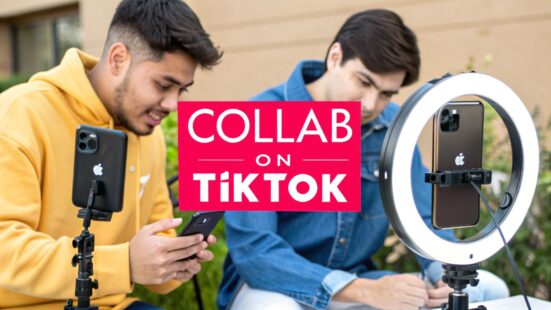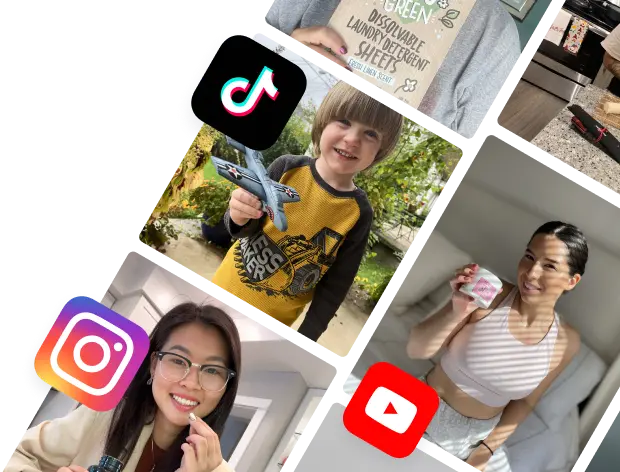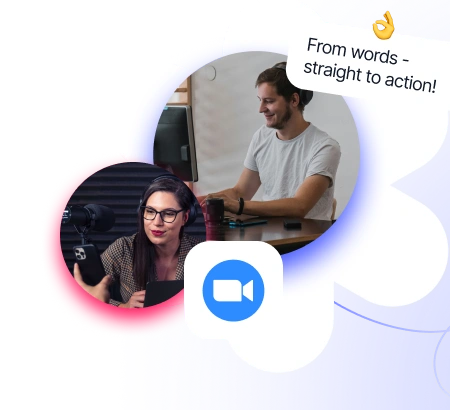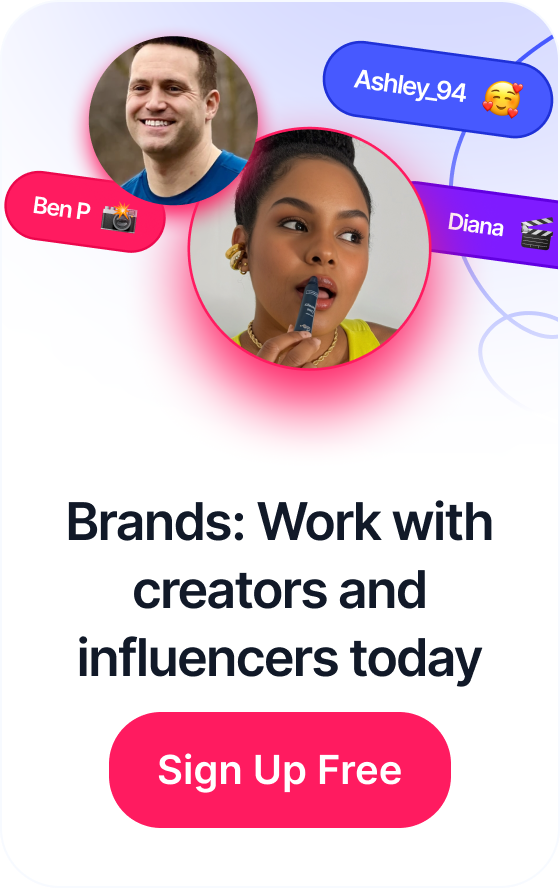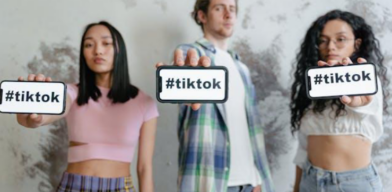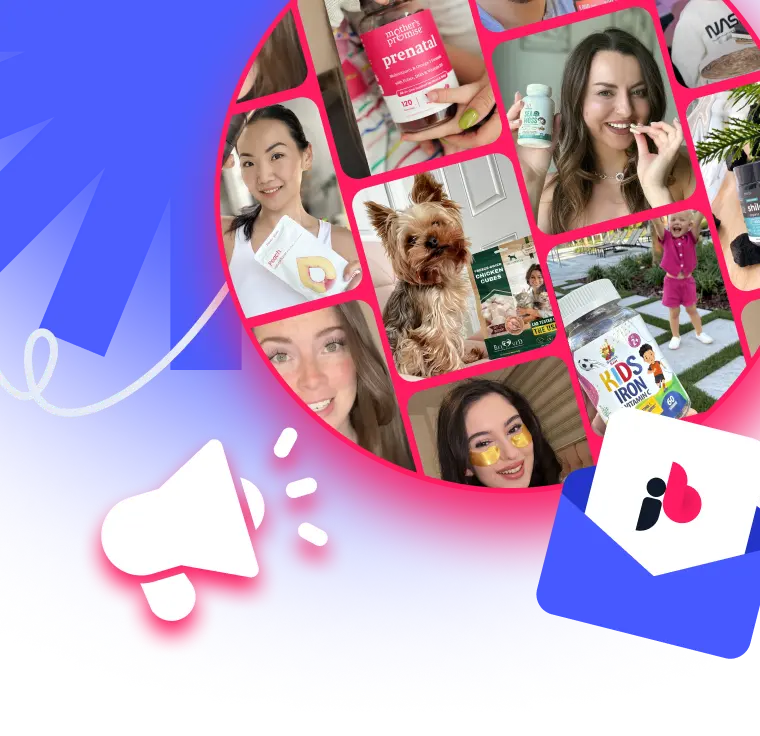 7 Advanced Content Repurposing Strategies for 2025
7 Advanced Content Repurposing Strategies for 2025
If you want to know how to collaborate on TikTok, it really comes down to three things: planning your attack, finding the right creator, and making authentic content together. This isn't about just throwing money at someone for a quick shoutout. It's about building a real partnership that resonates with their audience.
Table of Contents
Building Your TikTok Collaboration Strategy
A winning collaboration is forged long before you ever slide into a creator's DMs. You need a solid game plan first. Honestly, this all ties back to having a good social media marketing strategy in the first place. That foundational work makes sure your TikTok efforts are focused, measurable, and actually help your business grow.
Just saying you want to "go viral" isn't a strategy; it's a wish. You have to get specific. What do you really want this collaboration to do for you? Are you trying to get your brand in front of Gen Z, or are you hoping to drive immediate sales for a new product launch?
Define Your Campaign Objectives
Before you even think about which creator to partner with, you have to know what success looks like. Your goals will shape every decision you make, from the type of influencer you choose to the kind of video you create together. Ditch the vague ideas and set some concrete targets.
So, what are you trying to accomplish? Most brands I've worked with have one of these goals:
- Boost Brand Awareness: This is all about getting your name out there. You're introducing your brand to a new, highly-targeted audience. You'll measure this with metrics like reach, views, and maybe a bump in your own follower count.
- Drive Product Sales: This one's straightforward. You want to see a direct link between the collaboration and sales. The best way to track this is with custom discount codes or affiliate links.
- Generate Qualified Leads: Maybe you're not selling a physical product. You can use a collaboration to get email sign-ups for a newsletter, registrations for a webinar, or downloads of a free guide.
- Source User-Generated Content (UGC): Sometimes the goal is simply to get great video content. Partnering with creators gives you authentic, high-quality assets you can repurpose on your own social channels or even in paid ads.
Set a Realistic Budget and KPIs
Let's talk money. Your budget isn't just the creator's fee. You've got to think bigger. A smart budget also covers things like shipping products to the creator, putting ad spend behind the video to give it a boost, and any agency or platform fees. Whatever your budget is, be upfront about compensation right from the start.
Key Takeaway: Your Key Performance Indicators (KPIs) are just your goals with numbers attached. They are the hard metrics you'll use to decide if the campaign was a success or a flop.
For example, if brand awareness is your goal, your KPIs might be hitting 1 million video views and seeing a 10% lift in profile visits. If you're chasing sales, a crucial KPI would be achieving a 2:1 return on ad spend (ROAS) tracked via the creator's unique discount code. You absolutely have to set these benchmarks beforehand. It's the only way to know what your return on investment truly is and prove the campaign was worth it.
Finding the Right TikTok Creator for Your Brand

The difference between a killer campaign and a total flop often comes down to one thing: the creator you choose. Finding a true partner for your brand on TikTok is about so much more than just a big follower count. It's about finding that sweet spot where a creator's audience, content style, and personal values click perfectly with your own.
The discovery process is really part intuition, part data-driven search. I always recommend starting right on the platform itself. Spend some time just using TikTok's search bar. Look up keywords and hashtags that are hot in your industry and see who’s consistently creating the most engaging stuff. You'll be surprised what you can find.
After you've done some manual digging, it’s time to bring in the specialized tools. The official TikTok Creator Marketplace is the best place to begin. It lets you filter potential partners by their niche, audience demographics, and even location, giving you a level of verified data and security that you just won't get from sliding into someone's DMs.
Digging Deeper Than Follower Counts
Let's be real: vanity metrics like follower counts and video views can be incredibly deceiving. A creator might have a massive following, but if those followers aren't genuinely engaged or don't fit your target demographic, the partnership is destined to fail. You have to look at the metrics that actually move the needle.
Focus on these crucial signals instead:
- Engagement Quality: Don't just glance at the number of likes and comments—actually read them. Are people asking thoughtful questions? Are they tagging friends and having real conversations? A wall of fire emojis is nice, but authentic discussion is where the real value lies.
- Audience Sentiment: Pay close attention to the vibe of the comment section. Is it a positive, supportive community, or is it riddled with negativity and spam? A healthy creator-audience relationship is a massive green flag.
- Demographic Alignment: This is non-negotiable. Use platform analytics to verify that their audience is your audience. If you sell high-end skincare for women over 30, a creator whose audience is 80% teenage boys is the wrong choice, no matter how many millions of views they pull in.
If you want to zoom out and understand how this fits into the bigger picture, checking out a comprehensive influencer marketing guide can give you a solid strategic foundation for all your creator partnerships.
Your Practical Vetting Checklist
Okay, so you have a shortlist of promising creators. Now it's time to do your homework. Think of this as the final, in-depth background check before you even think about reaching out. A thorough review of their past content and audience interactions will reveal everything you need to know.
A creator's feed is their resume. Look at their past brand deals. Did they feel like a clunky, out-of-place ad, or was the product integrated naturally in a way that genuinely served their audience? A seamless integration is the mark of a pro.
Before you draft that first email, run every potential creator through this final checklist:
- Content Consistency: Is their content consistent in its tone, quality, and posting schedule? A creator who posts erratically or whose video style is all over the place can be a sign of unreliability.
- Brand Safety Scan: Go back in time. Scrutinize their older videos, comments, and linked accounts. You're looking for any history of controversy, offensive material, or anything else that clashes with your brand’s core values.
- Audience Interaction: How do they handle their comments section? A creator who actively and thoughtfully engages with their community shows they’ve built real trust and rapport—something you can't buy.
How to Pitch and Partner with Creators

This is where the rubber meets the road. Your outreach is your first—and maybe only—chance to make an impression. Think about it: popular creators are flooded with dozens of partnership DMs every single day. A generic, copy-pasted message isn't just lazy; it's a guaranteed way to get your brand ignored.
The only way to cut through that noise is with genuine personalization. Show them you've actually done your homework. Mention a specific video of theirs you loved (and why!). Explain exactly what it is about their unique voice and audience that made you think, "This is the one." Your goal isn't to send a bland advertisement; it's to start a real conversation.
Crafting an Irresistible First Message
Your first message needs to be short, professional, and full of value. Creators are entrepreneurs running their own businesses, so you have to respect their time. Get straight to the point and make it crystal clear what the opportunity is and why it’s a perfect match for them.
Here's what a solid opening message should always contain:
- A personal touch: Start with their name and a specific reference to their content.
- A quick intro: Briefly say who you are and what your brand is all about.
- The "Why You": This is crucial. Tell them why you picked them over the countless other creators out there.
- The core idea: Give them a one or two-sentence teaser of your campaign concept.
- A clear next step: End with a simple call to action, like, "Let me know if you're open to hearing more."
Whatever you do, don't attach a full creative brief or a contract in that first email. That’s way too much, too soon. Think of this initial message as a friendly, professional handshake to see if they're interested.
Remember, the best pitches are framed as a win for the creator’s audience first, not just your brand. Ask yourself: how will this collaboration genuinely benefit the community they've spent years building? Approaching it this way shows respect and almost always leads to a more authentic, successful partnership.
Negotiating a Fair and Clear Agreement
Once a creator signals they're interested, it's time to talk specifics. This is the moment you shift from a casual chat to a professional negotiation. Honesty and transparency are your best friends here. You need to be ready to openly discuss compensation, what you expect them to create (deliverables), and how you plan to use the content.
To kick things off on the right foot, make sure your formal proposal or contract clearly lays out everything. This protects both of you.
Here are the non-negotiables to include:
- Compensation: Be specific. Is it a flat fee, a commission structure, or a gifted product exchange? Also, state the payment schedule.
- Deliverables: Detail the exact number and type of videos (e.g., one 60-second TikTok video, two Stories). Mention any must-haves, like a link in their bio or specific hashtags.
- Content Usage Rights: Define how and where your brand can use the content (e.g., on your own social media, in paid ads) and for how long. This is a big one.
- Key Deadlines: Lock in the dates for draft submissions, your feedback window, and the final go-live post date.
Putting all of this into a clear, written agreement prevents misunderstandings down the line. It sets the foundation for a smooth collaboration and, hopefully, a long-term partnership. After all, the real goal isn't just a single post; it's to find a true advocate for your brand.
Alright, you've found your perfect creator and agreed on the terms. Now comes the exciting part: turning your strategy into actual TikTok content that people will love.
The best collaborations I've seen—and been a part of—are built on trust and creative freedom, not a list of rigid demands. You want to empower the creator to do what they do best, which is making content their audience genuinely enjoys. Your job is to guide, not micromanage.
Think of it as a creative partnership. You set the destination (your campaign goals), and they steer the ship.
This is the general flow I follow for every collaboration to make sure we go from a great idea to a finished video without any major headaches.

As you can see, it's a logical progression. This structured approach helps keep everyone on the same page from the initial brainstorm all the way to the final shoot.
Let Creators Be Creators
Here’s a hard truth: creators know their audience infinitely better than you do. They've spent countless hours building that community, and their followers trust their voice. The smartest thing you can do is give them a clear, simple creative brief and then get out of their way.
Of course, you need some consistency. That’s where good Social Media Brand Guidelines come in. This document should lay out the essential do's and don'ts without boxing them in. It's about giving them a sandbox to play in, not a cage.
The best briefs focus on the "what" and the "why," leaving the "how" entirely to the creator. Tell them the key message, the call-to-action, and any must-haves (like a specific hashtag or product shot). Then, let them bring it to life in their own style.
This is how you get a video that feels like a natural part of their feed instead of a clunky, out-of-place ad. Authenticity is everything on TikTok. If it feels forced or overly scripted, users will scroll right past it.
Choose the Right Format
Different goals call for different types of videos. Before you even start brainstorming, you should have an idea of which TikTok format will best serve your campaign. This isn't just about making a video; it's about making the right kind of video.
Here’s a quick breakdown of the most popular formats and where they shine.
Effective TikTok Collaboration Formats
| Format | Description | Best For |
|---|---|---|
| Product Integration | The creator naturally weaves the product into their regular content style. | Building brand awareness and showcasing a product's everyday use in a subtle, authentic way. |
| Dedicated Review | The creator focuses the entire video on reviewing or demonstrating the product. | Driving conversions and highlighting specific features. Great for products that need explanation. |
| Giveaway/Contest | A collaboration centered around a contest where followers can win a product. | Rapidly boosting engagement, follower counts, and generating user-generated content (UGC). |
| Brand Challenge | The brand creates a unique hashtag challenge, and the creator kicks it off. | Going viral and encouraging widespread participation and UGC. |
| Duet/Stitch | The creator interacts with the brand's existing video using TikTok's native features. | Sparking conversation, creating reaction content, and showing a "before and after" effect. |
Picking the right format from the get-go sets the entire collaboration up for success. It ensures the creative direction aligns perfectly with your business objectives, whether that's brand awareness, engagement, or direct sales.
How to Measure Your TikTok Campaign Success
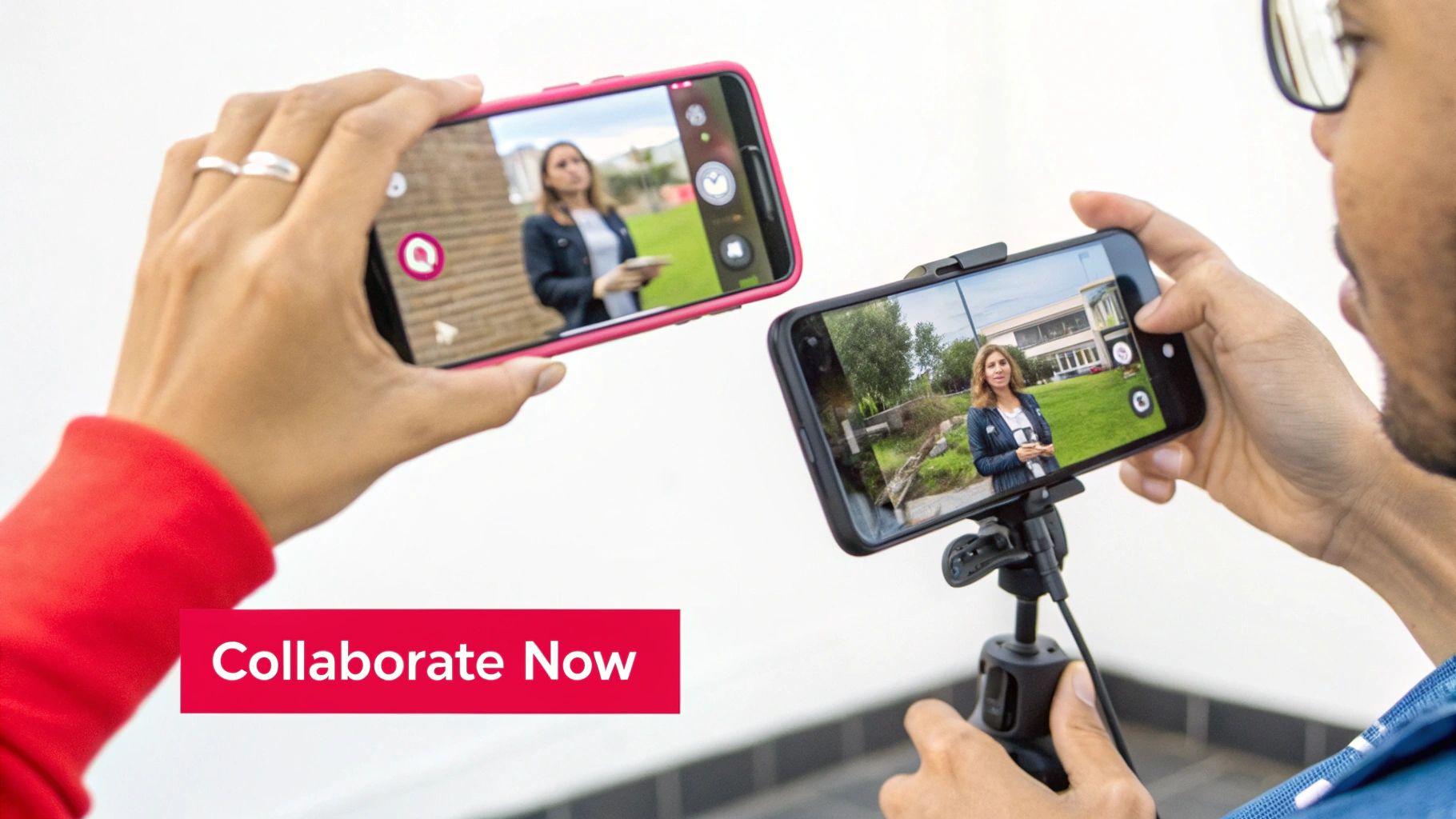
So, your collaborative video is officially live on TikTok. That’s a huge milestone, but your job isn't quite over yet. Now comes the part where you figure out if all that hard work actually paid off.
Without solid data, you're essentially just hoping for the best. Tracking the performance of your collaboration is the only way to prove its value, justify the budget, and—most importantly—learn what to do better next time. This means looking past the surface-level numbers to see what’s really moving the needle for your brand.
Beyond Views: The Metrics That Actually Matter
Getting a ton of views is a great ego boost, but it doesn't paint the full picture. To understand what truly resonated with the audience, you need to dig into your TikTok Analytics and look at how people interacted with the content.
Here are the metrics I always keep a close eye on:
- Core Engagement: Go beyond likes and look straight at the comments, shares, and saves. Shares are gold; they mean someone found the content so good they put their own reputation on the line to recommend it. Saves are just as valuable, signaling that people want to come back to your video later.
- Audience Growth: Did you gain a significant bump in followers on your brand’s profile during the campaign? That's a fantastic sign. It shows the creator’s audience liked what they saw enough to want more from you directly.
- Click-Through Rate (CTR): This is your bread and butter if you used a unique link in the creator's bio or a special discount code. Your CTR tells you exactly how many people took that crucial next step, making it one of the clearest measures of success for driving traffic or sales.
Calculating Your Return on Investment
Let's talk money. Calculating your Return on Investment (ROI) is how you translate all those clicks and comments into something your finance team will understand. It’s a simple formula that puts the campaign's cost up against the value it brought in.
ROI Formula: (Value Generated – Campaign Cost) / Campaign Cost x 100
Let’s say you spent $2,000 total on a creator collaboration. If you tracked $6,000 in sales through their unique discount code, your ROI would be a whopping 200%. Now you have concrete proof that the partnership was a profitable decision.
Even if your goal was brand awareness, you can still estimate ROI. Just assign a value to outcomes like new followers or email sign-ups to see how your investment performed.
Turning Data Into Action
The real power of all this measurement is what you do with it. Data is only useful if it informs your next move.
If a particular video format or creator niche knocked it out of the park, that's a clear signal to double down on that strategy. On the other hand, if a campaign didn't meet expectations, you can analyze the data to figure out why. Was the call-to-action confusing? Was the creator not quite the right fit for your audience?
The insights you gather today build a smarter strategy for tomorrow. This data-first approach is becoming even more crucial as the platform evolves. In fact, trends show that by 2025, AI-generated videos could make up 52% of all content on TikTok. This suggests that future collaborations will lean even more heavily on data for optimization and personalization. You can dig deeper into these trends by checking out the latest TikTok statistics on Thunderbit.com.
By consistently measuring your results and adapting your approach, you turn every single campaign into a valuable lesson. That’s how you ensure each collaboration is more impactful than the last.
Common TikTok Collaboration Questions
Diving into your first few TikTok partnerships can feel like trying to navigate a new city without a map. There are a ton of unwritten rules, and it's natural to have questions about the business side of things. Let's break down some of the most common hurdles that both brands and creators run into.
Right off the bat, a huge question is about contracts. Do you really need one, especially for a smaller project? The answer is a hard yes. Think of a contract, even a simple one, as your safety net. It protects everyone involved by clearly spelling out deliverables, deadlines, content usage rights, and payment details. Relying on DMs alone is just asking for trouble down the road.
Then there's the big one: money. How much should you pay, or how much should you charge? There's no single magic number. A fair rate depends on a whole host of factors, from a creator's engagement and follower count to their specific niche and the actual work involved. A nano-influencer might be thrilled with a gifted product, while a macro-influencer with a massive, engaged audience could command thousands of dollars. The best approach is to do your homework and see what creators of a similar size and scope are charging to get a realistic baseline.
What About Disclosures and Underperformance?
This is an area you absolutely cannot afford to get wrong. If there's any form of payment involved—whether it's cash or a free product—the content must be disclosed as an ad. Thankfully, TikTok makes this pretty straightforward.
- Use the Branded Content Toggle: This is your best friend. TikTok has a built-in feature that automatically adds a clear "Paid partnership" label to the video. It's the cleanest and most transparent way to do it.
- Include Obvious Hashtags: If you aren't using the toggle for some reason, you still need to be clear. Use hashtags like #Ad or #Sponsored right at the beginning of your caption, not buried under a mountain of other tags.
Don't take this lightly. The Federal Trade Commission (FTC) is serious about disclosure rules. Skipping this step can lead to hefty fines for both the brand and the creator. Honesty isn't just good for your audience's trust; it's the law.
But what if a video just…flops? It happens. If a collaboration doesn't hit the numbers you hoped for, the first step is to check your agreement. If the creator did everything they promised—posted on time, included the key messages, and followed the brief—you generally have to chalk it up to the unpredictable nature of social media.
However, if they dropped the ball on their end (like posting late or getting a core message wrong), it's time for a professional conversation. Go back to your contract and talk about a fair resolution. Maybe that’s a partial refund, or perhaps they can create an extra piece of content to make things right. This is exactly why that contract is so essential—it's your playbook for when things don't go perfectly to plan.
Ready to stop searching and start creating? JoinBrands connects you with over 250,000 vetted creators, from TikTok Shop Affiliates to UGC pros. Find the perfect partner, manage campaigns, and get authentic content that drives sales, all in one platform.
